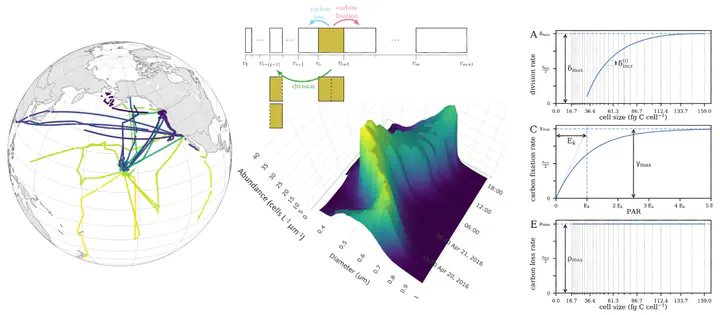Statistical Tools and Population Models

We use statistical models to extract biological insights from SeaFlow data. We develop population models to estimate key rates - such as growth, division and mortality - from the spatial and temporal changes in phytoplankton size distributions. By linking these rates to environmental conditions, we show how factors like temperature, nutrients, and light shape phytoplankton communities on a global scale.
See Software to learn more about our statistical tools and population models.